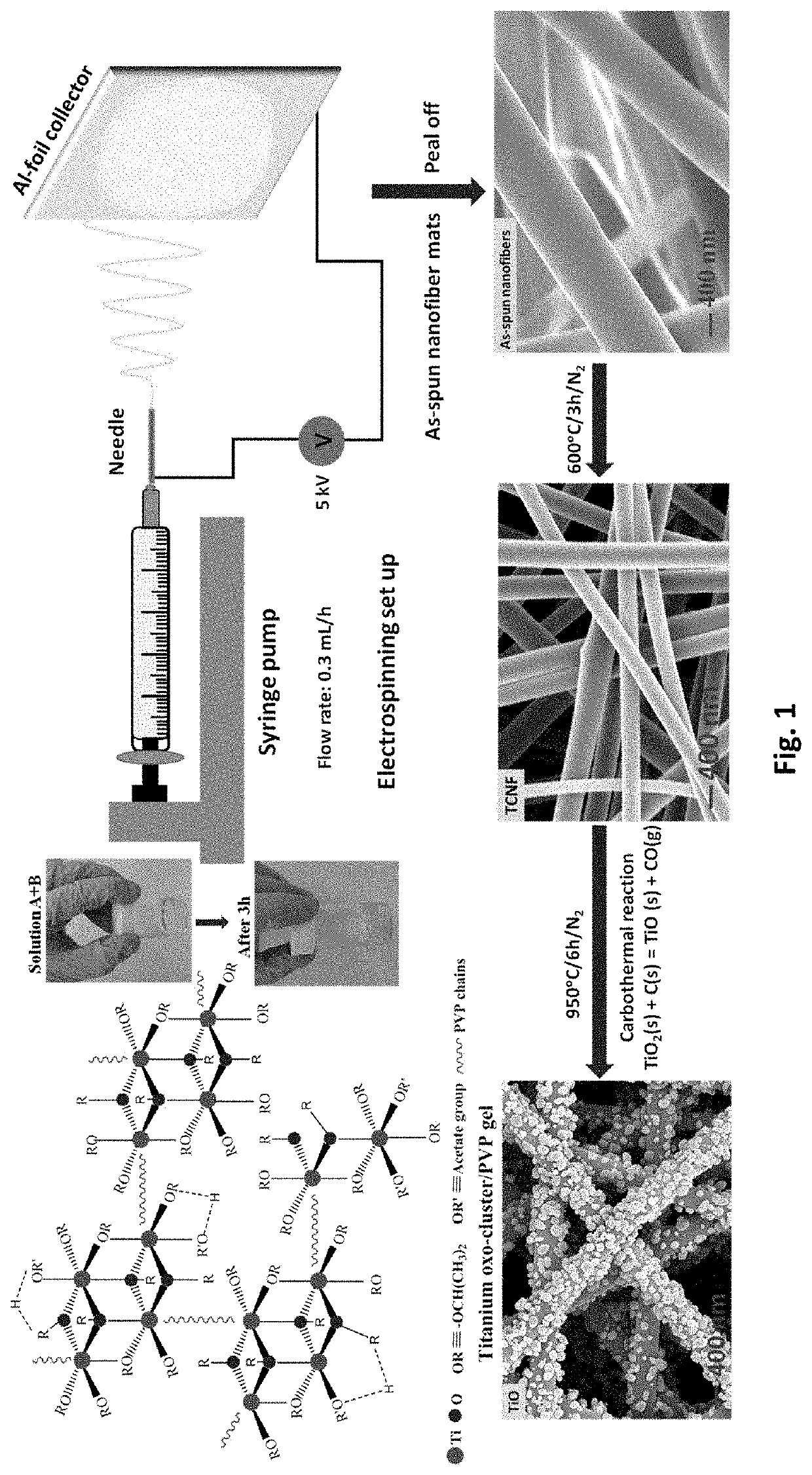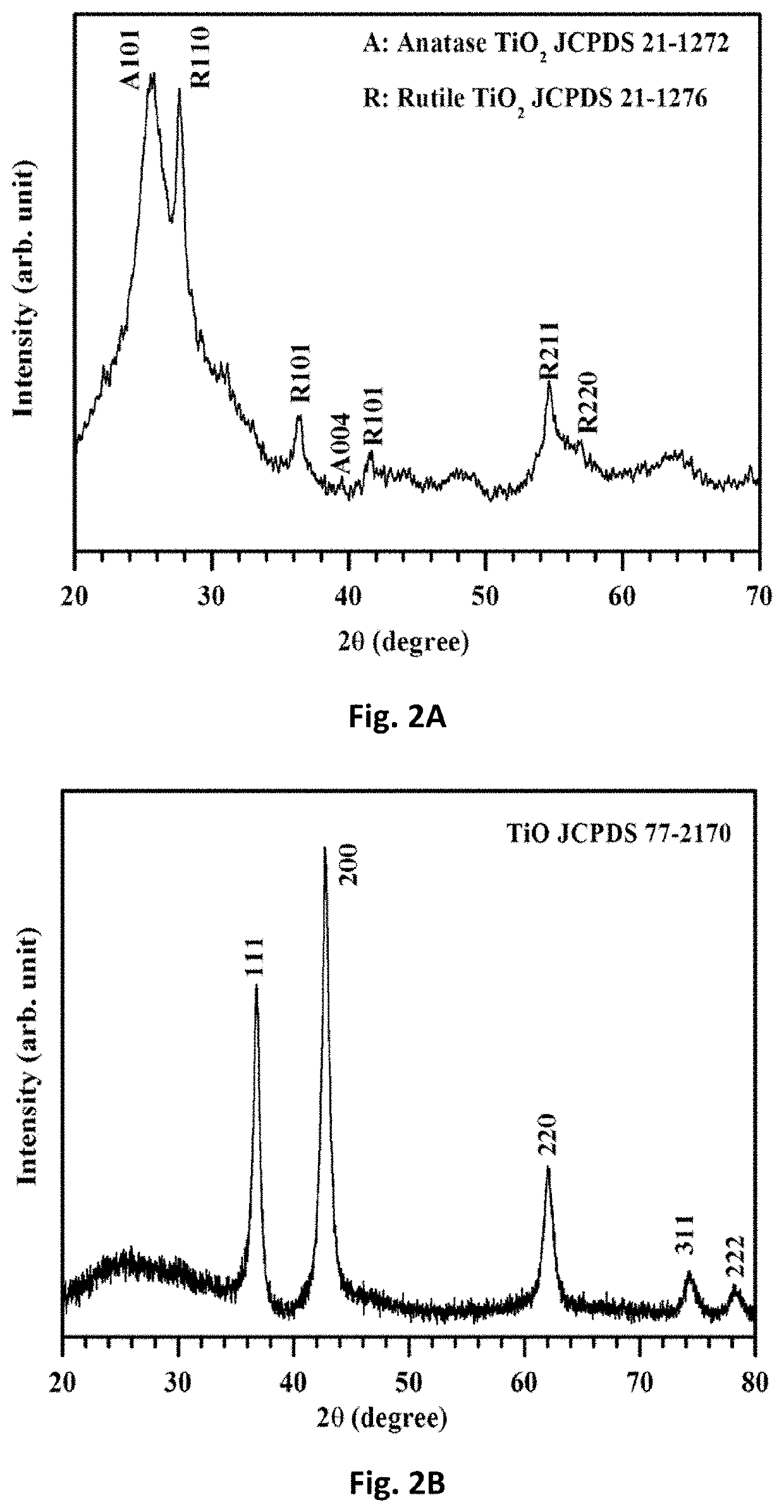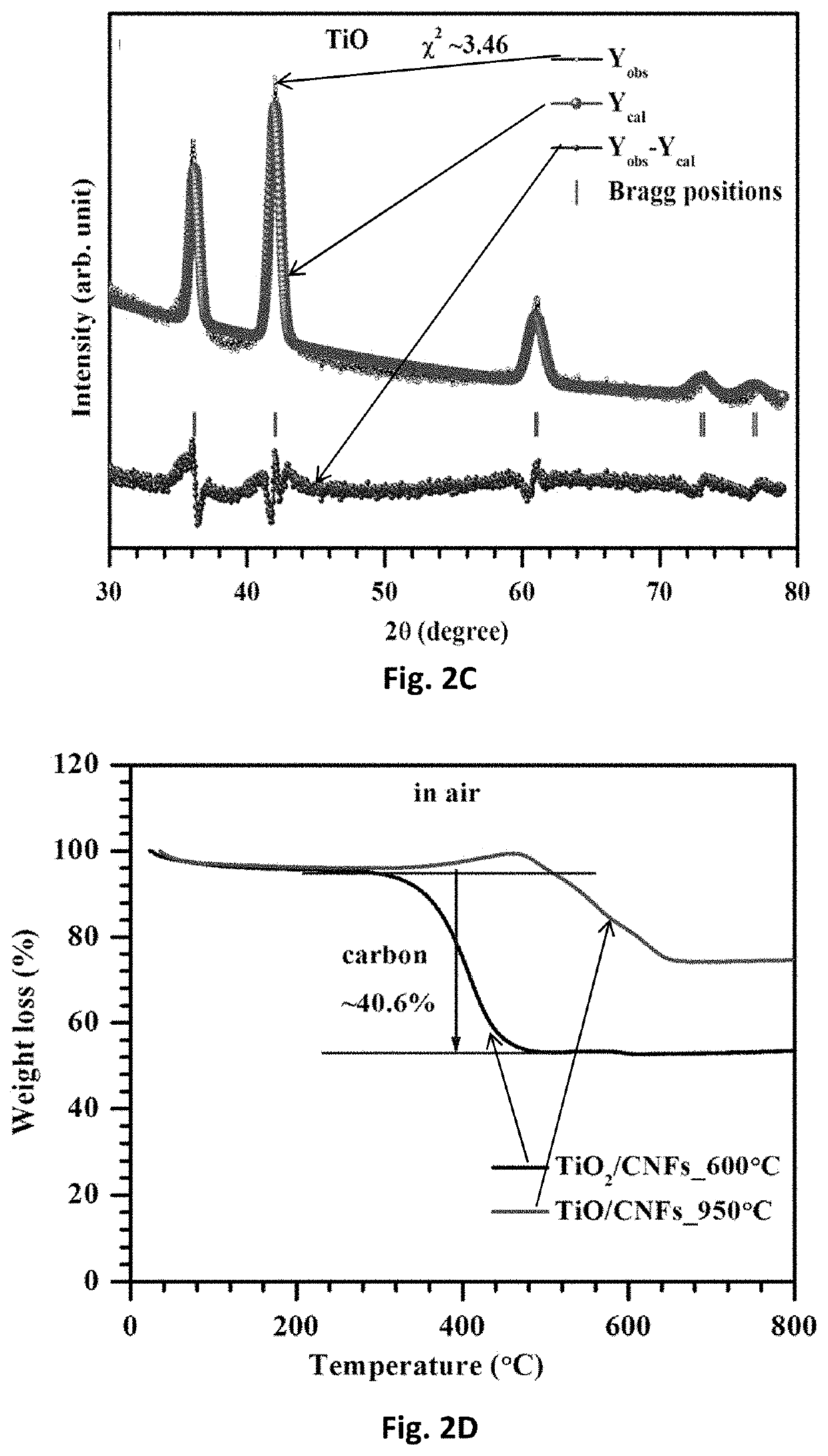Free-standing, binder-free metal monoxide/suboxide nanofiber as cathodes or anodes for batteries
a technology of metal monoxide and suboxide nanofiber, which is applied in the manufacture of electrodes, cell components, electrochemical generators, etc., can solve the problems of poor performance, hindering and affecting the commercial development of li—s batteries
- Summary
- Abstract
- Description
- Claims
- Application Information
AI Technical Summary
Benefits of technology
Problems solved by technology
Method used
Image
Examples
examples
[0122]The following examples are illustrative, but not limiting of the methods and compositions of the present disclosure.
1. Fabrication of TiO Nanofiber Mats
[0123]Electrospinning was used to fabricate free-standing TiO nanofiber mats. First, solution A was prepared by dissolving 0.7 g PVP into 3.75 mL anhydrous ethanol (Alfa Assar) and stirring at room temperature until the solution became transparent. Solution B was made by adding 0.75 mL titanium isopropoxide (TIP) into a mixed solution of 1 mL ethanol and 2 mL glacial acetic acid. Solution B was then added to solution A and stirred at room temperature for 3 h. Due to the Lewis acidity of the Ti4+-centers and Lewis basicity of the alkoxide groups, TiP tends to form oligomers [Ti(OR)4]n, i.e., aggregates (coordination number 6) via alkoxo-bridges. Consequently, ethanol was used as a solvent. The interaction of ethanol (Lewis base) solvent with Ti4+-centers competes against alkoxo-bridge formation and thus minimizes the degree of a...
PUM
| Property | Measurement | Unit |
|---|---|---|
| temperature | aaaaa | aaaaa |
| temperature | aaaaa | aaaaa |
| temperature | aaaaa | aaaaa |
Abstract
Description
Claims
Application Information
 Login to View More
Login to View More - R&D
- Intellectual Property
- Life Sciences
- Materials
- Tech Scout
- Unparalleled Data Quality
- Higher Quality Content
- 60% Fewer Hallucinations
Browse by: Latest US Patents, China's latest patents, Technical Efficacy Thesaurus, Application Domain, Technology Topic, Popular Technical Reports.
© 2025 PatSnap. All rights reserved.Legal|Privacy policy|Modern Slavery Act Transparency Statement|Sitemap|About US| Contact US: help@patsnap.com



